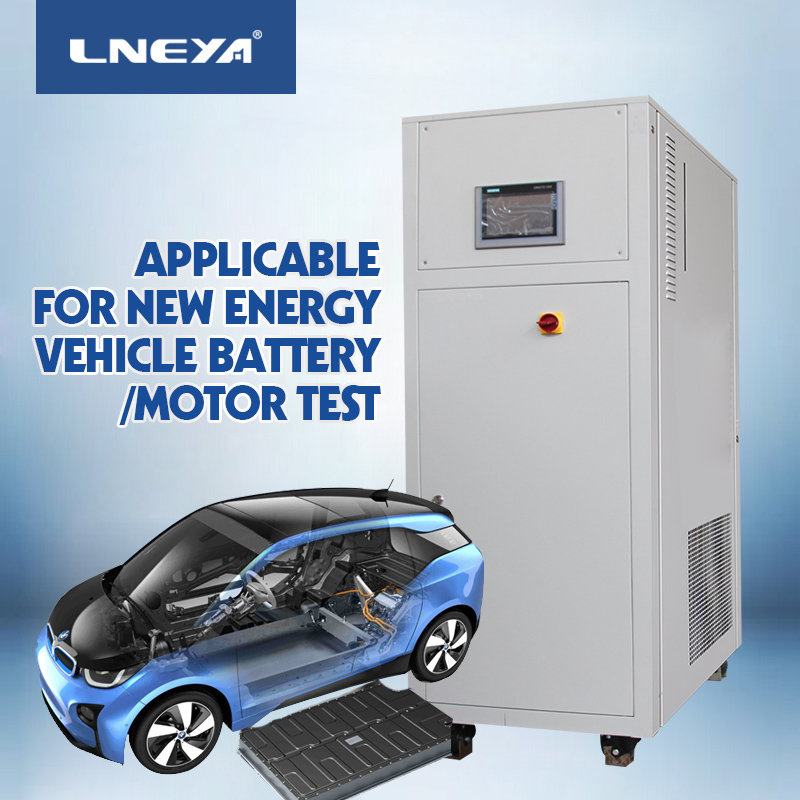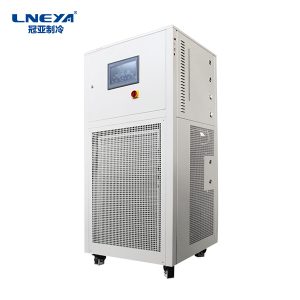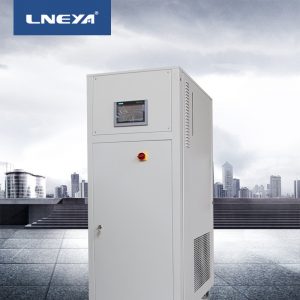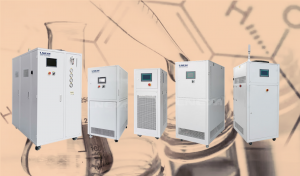Use of electric vehicle battery chillers in the applied industry
In the electric vehicle industry, the battery pack is one of its main components, with high difficulty and complex nature, so the choice of chiller for its testing is also very important.
The LNEYA electric vehicle battery chiller provides a solution for all relevant characteristics required to optimize durability, range and efficiency of the battery pack, since the battery pack PACK is a highly complex high current high voltage system with BMS, cooling system and electrical and mechanical components. It is important to choose the right chiller.

The testing of new energy electric vehicle batteries includes not only battery voltage, current and temperature, but also all BMS-related signals. The electric vehicle battery chiller battery pack test system provides a complete real-time solution for new energy battery motors. Components in the test environment can be controlled and measured in real time, and these measurements are then used directly as variables in further testing. Data evaluation can be performed directly during the test without further complicated post-processing.
The chiller synchronizes all components in the test environment and records its measurements and uses them as variables in the rest of the test sequence: BMS, temperature/climate chamber and DUT adjustment, measurement and control modules for recording voltage , temperature and provide all analog and digital inputs and outputs.
LNEYA new energy electric car battery chiller is suitable for new energy battery / motor test with fully enclosed pipeline design, high efficiency plate heat exchanger, applied to new energy battery, motor test, temperature rise, constant temperature control, especially suitable for testing There is a need for heat and heat release process control. The new energy battery chiller can not only control the temperature, but also control the flow and pressure. The temperature control range of the product is -40 degrees to 135 degrees, and the antifreeze flow control range is 2~20L/min. The product provides high and low temperature testing of antifreeze liquid and flow and pressure control of antifreeze for new energy automobile motor and battery pack. The battery pack can be tested in a high and low temperature environment, and the battery pack is provided with high temperature, low temperature, control flow, pressure and the like.
In addition to being used in the new energy battery industry, it can also be used in motor testing. The new energy electric vehicle battery chiller developed by LNEYA meets the requirements of the production line.
Recommandations connexes
-
Description des caractéristiques du dissipateur thermique dans le contrôle de la température des puces
1315Avec le développement continu des puces électroniques, la technologie de dissipation de la chaleur progresse également. La technologie de contrôle de la température des puces de LNEYA est continuellement promue en même temps que l'équipement de test des puces. La tendance de développement des puces électroniques modernes...
Voir les détails -
Common faults of plate heat exchangers in new energy vehicle inspection
1404The reason for the excessive pressure drop of the new energy vehicle detection is that the running system pipeline is not properly purged, especially in the newly installed system pipeline, many dirt (such as welding slag) enters the interior of t...
Voir les détails -
Selection method of 0℃~5℃ freezing liquid for industrial ultra-low temperature chiller
950As the requirements for process production become higher and higher, industrial ultra-low temperature chillers are required to provide cryogenic liquid below 5 degrees or even more than minus 100 degrees in some chemical process synthesis, reactor...
Voir les détails -
Disadvantages and advantages of general heat transfer oil heating circulation system
1086The heat conduction oil heating circulation system adopts a fully closed loop structure to directly act on the heat energy to the heated medium. Its advantages are: (1) Due to the continuous renewal of the heat transfer surface, the heat loss is s...
Voir les détails
 LNEYA Industrial Chillers Fabricant Fournisseur
LNEYA Industrial Chillers Fabricant Fournisseur













